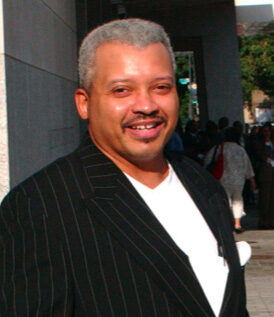The headline certainly was provocative enough. It read, “Just another victim of melanated fratricide.”
“Melanated fratricide” was the term used last week in a commentary published in The Philadelphia Tribune, a black-owned newspaper in the City of Brotherly Love. Except, ironically, the “brotherly love” part of the equation is missing for some young black men.
John N. Mitchell wrote in his column for the Tribune, “(As of Aug. 20) The ‘Murder Meter’ — the name I’ve coined for the Philadelphia Police Department’s method of counting homicides across the city — reached 201. Of that number, 150, or 74.6 percent of the victims, have been African-American. It is a virtual certainty that the overwhelming majority of them were killed by other black men.”
That, in a nutshell, is “melanated fratricide.”
Which occurs in some neighborhoods where black-on-black shootings simply are out of control. Philadelphia overall is 44.1 percent black, with a murder-victim rate 30 percentage points higher. Astounding figures for sure. Poll the major U.S. cities.
Take Baltimore, a city that is known not only for its tasty crab cakes but also its public calls for ceasefires. Ninety percent of its homicide victims are black folk, mostly the result of beefs perpetuated by gang-bangers or drug-related incidents. The city’s protest motto has become a desperate plea, bad grammar notwithstanding, “Nobody kill anybody.”
Chicago’s murderous headlines essentially focus on the notorious south and west sides of the city, in mostly black areas similar to that of Baltimore or Philadelphia or Detroit or Los Angeles or Miami or Dallas or Washington or pick the major city …
Asked what induced him to write about black-male violence, The Philadelphia Tribune’s Mitchell responded: “I’ve had a gun stuck in my face three times. And each time, it was a ‘brother’ — all of them under the age of 25. In our communities, the black-on-black crime far outweighs the police violence against these young black boys. We have to be honest with ourselves.” (Mitchell, 53, lives in west Philadelphia.)
Remember this headline in early August: “At least 72 shot, 13 killed in Chicago over violent summer weekend.”
Embattled Chicago Mayor Rahm Emanuel and Chicago Police Department Superintendent Eddie Johnson have shouldered much of the blame regarding that city’s monstrous crime problem. Emanuel recently went rogue, as he jumped on the politically INCORRECT train.
Emanuel publicly admonished predominantly black neighborhoods, as he declared, “This may not be politically correct, but I know the power of what faith and family can do. … Our kids need that structure. … I am asking … that we also don’t shy away from a full discussion about the importance of family and faith helping to develop and nurture character, self-respect, a value system and a moral compass that allows kids to know good from bad and right from wrong.”
He didn’t specifically mention race, but we all know to whom Emanuel is referring. Emanuel, of course, was excoriated for those comments, as many black folk claimed he indicted entire communities and engaged in victim-blaming and tone-deafness. However, Emanuel didn’t order or direct young black guys — the gang-bangers, the drug dealers — to shoot and kill other young black guys. Neither did Superintendent Johnson.
All they asked for was better parental guidance and positive community involvement and awareness.
Remember, in 1965, a little-known sociologist named Daniel Patrick Moynihan predicted all of this chaos and carnage in blighted, black urban areas. He was the author of “The Negro Family: The Case for National Action.” It was a contentious treatise more commonly called “The Moynihan Report,” which blamed many of the ills in decaying black communities on pathological family destruction caused by an increase in out-of-wedlock births and the disappearance of black-male father figures.
Moynihan, an assistant secretary of labor in the President Lyndon Johnson Administration, proved prophetic, writing: “In a word, most Negro youth are in danger of being caught up in the tangle of pathology that affects their world, and probably a majority are so entrapped. Many of those who escape do so for one generation only: as things now are, their children may have to run the gauntlet all over again. That is not the least vicious aspect of the world that white America has made for the Negro.”
The reaction 53 years ago to Moynihan’s study was predictable: Conservatives praised it incessantly; liberal whites reduced it to being culturally insensitive; black folk labeled it as condescendingly racist. And Moynihan, who later became a prominent New York U.S. senator, was a liberal Democrat.
On the other side, Star Parker is the founder and president of a conservative black group called CURE. Yes, it is a Washington-based think tank whose acronym means Center for Urban Renewal and Education. Its mission statement: “To fight poverty and restore dignity through the message of faith, freedom and personal responsibility.”
In her weekly newsletter, Parker announced she was heading to Chicago to meet with clergy, neighborhood leaders and local organizations town-hall style to discuss the wicked black-on-black violence in the Windy City.
Parker wrote, “You know the violence that has destroyed so many lives in this great city is a symptom of a disease. That disease is a broken culture that has created a cycle of poverty and broken families who are trapped on Uncle Sam’s Plantation …
“We must liberate our great cities from the failure of the Left with our great ideas! Are you with me?”
Each individual only can answer her question on a personal basis. Because finding solutions to the scourge of “melanated fratricide” is a tough chore.


